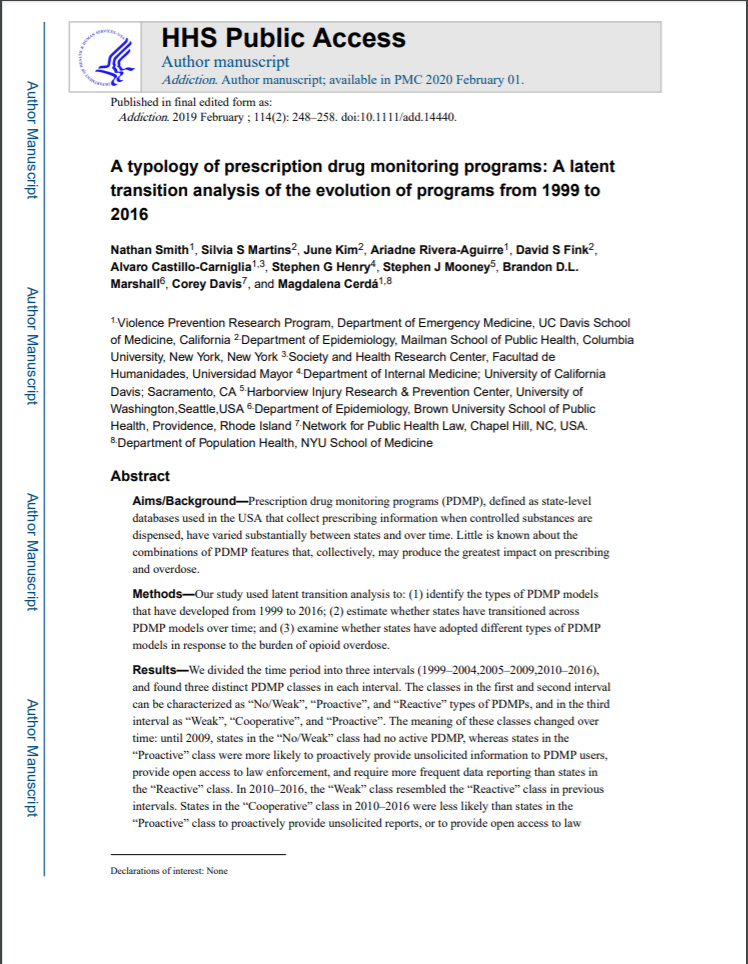A typology of prescription drug monitoring programs: a latent transition analysis of the evolution of programs from 1999 to 2016

Fecha
2019Autor
Castillo-Carniglia, Alvaro [Univ Mayor, Fac Humanidades, Soc & Hlth Res Ctr, Santiago, Chile]
Smith, Nathan; Martins, Silvia S.; Kim, June; Rivera-Aguirre, Ariadne; Fink, David S.; Henry, Stephen G.; Mooney, Stephen J.; Marshall, Brandon D. L.; Davis, Corey; Cerda, Magdalena
Ubicación geográfica
Notas
HERRAMIENTAS
Acceda a títulos restringidos
¿Cómo descargar?Resumen
Background and aims Prescription drug monitoring programs (PDMP), defined as state-level databases used in the United States that collect prescribing information when controlled substances are dispensed, have varied substantially between states and over time. Little is known about the combinations of PDMP features that, collectively, may produce the greatest impact on prescribing and overdose. We aimed to (1) identify the types of PDMP models that have developed from 1999 to 2016, (2) estimate whether states have transitioned across PDMP models over time and (3) examine whether states have adopted different types of PDMP models in response to the burden of opioid overdose. Methods A latent transition analysis of PDMP models based on an adaptation of nine PDMP characteristics classified by prescription opioid policy experts as potentially important determinants of prescribing practices and prescription opioid overdose events. Results We divided the time-period into three intervals (1999-2004, 2005-09, 2010-16), and found three distinct PDMP classes in each interval. The classes in the first and second interval can be characterized as 'no/weak', 'proactive' and 'reactive' types of PDMPs, and in the third interval as 'weak', 'cooperative' and 'proactive'. The meaning of these classes changed over time: until 2009, states in the 'no/weak' class had no active PDMP, whereas states in the 'proactive' class were more likely to proactively provide unsolicited information to PDMP users, provide open access to law enforcement, and require more frequent data reporting than states in the 'reactive' class. In 2010-16, the 'weak' class resembled the 'reactive' class in previous intervals. States in the 'cooperative' class in 2010-16 were less likely than states in the 'proactive' class to provide unsolicited reports proactively or to provide open access to law enforcement; however, they were more likely than those in the 'proactive' class to share PDMP data with other states and to report more federal drug schedules. Conclusions Since 1999, US states have tended to transition to more robust classes of prescription drug monitoring programs. Opioid overdose deaths in prior years predicted the state's prescription drug monitoring program class but did not predict transitions between prescription drug monitoring program classes over time.
Coleccion/es a la/s que pertenece:
Si usted es autor(a) de este documento y NO desea que su publicación tenga acceso público en este repositorio, por favor complete el formulario aquí.